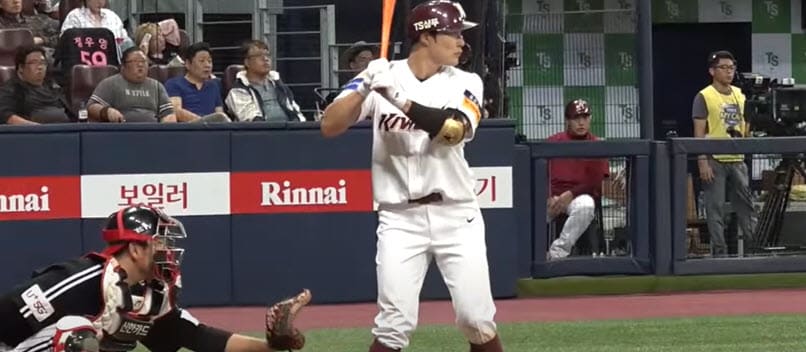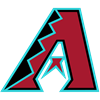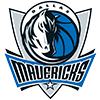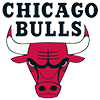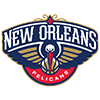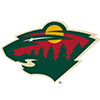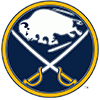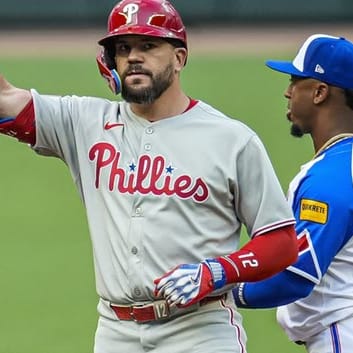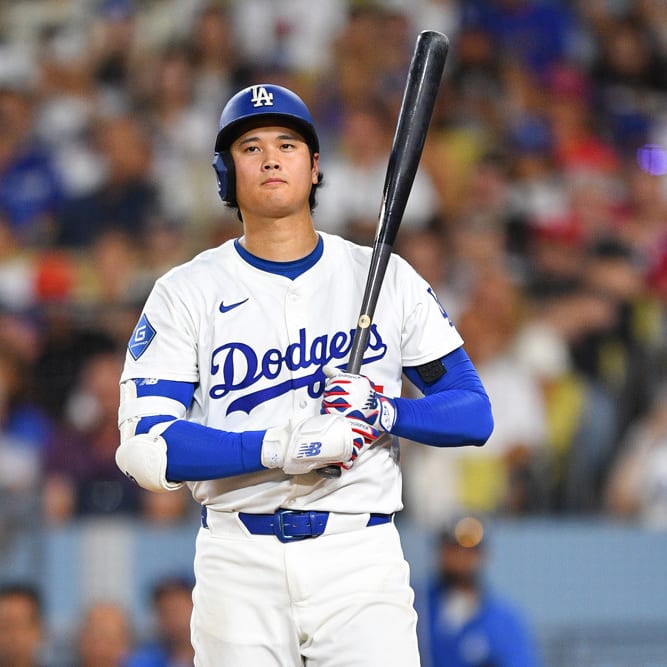The posting windows in South Korea and Japan are both open, and players could be landing with teams any day now. Just how lively the domestic free agent market will be this winter remains to be seen, which doesn't make it any easier to predict the international market. It's possible teams will turn to riskier but potentially cheaper international options rather than pay up for premium talent with major-league track records. It's also possible the market is depressed enough that Korean or Japanese stars elect to wait a year before making the jump, or that the logistical complications of making an international transaction in the middle of a pandemic cause talks to break down.
Regardless of how the financial aspects of the market play out, there are a small handful of players from both NPB and KBO who appear to have strong chances to make the jump, and the majority of them appear to be at minimum worthy of consideration during draft season should they indeed successfully come stateside. This article will break down and rank those players. It will also feature a quick breakdown of players who won't be coming over this offseason but who could potentially have major-league futures, for those willing to wait a few years in dynasty leagues.
PLAYERS FOR 2021
1) Ha-seong Kim, SS/3B: Unlike the majority of players who come to MLB from across the Pacific, Kim will be doing so during or even before his prime, as he just turned 25 in
The posting windows in South Korea and Japan are both open, and players could be landing with teams any day now. Just how lively the domestic free agent market will be this winter remains to be seen, which doesn't make it any easier to predict the international market. It's possible teams will turn to riskier but potentially cheaper international options rather than pay up for premium talent with major-league track records. It's also possible the market is depressed enough that Korean or Japanese stars elect to wait a year before making the jump, or that the logistical complications of making an international transaction in the middle of a pandemic cause talks to break down.
Regardless of how the financial aspects of the market play out, there are a small handful of players from both NPB and KBO who appear to have strong chances to make the jump, and the majority of them appear to be at minimum worthy of consideration during draft season should they indeed successfully come stateside. This article will break down and rank those players. It will also feature a quick breakdown of players who won't be coming over this offseason but who could potentially have major-league futures, for those willing to wait a few years in dynasty leagues.
PLAYERS FOR 2021
1) Ha-seong Kim, SS/3B: Unlike the majority of players who come to MLB from across the Pacific, Kim will be doing so during or even before his prime, as he just turned 25 in October. He burst onto the scene as a 19-year-old back in 2015, hitting .290 with 19 homers and 22 steals. (KBO is considered the rough equivalent to Double-A, and the only qualified 19-year-old in all of Double-A in 2019 was the Nationals' Luis Garcia, who posted a .617 OPS.) He's been quite consistent since then, hitting .281 or better with 19 or more homers each season while averaging 21.7 steals. This past season was his best, as he set career highs in OPS (.920) and homers (30, tied for ninth-best in the league) while stealing 23 bases. Those numbers are made all the more impressive by the fact that he plays the majority of his games at shortstop.
A strong all-around performer at the KBO level may be someone with no real weaknesses but no significant strengths as an MLB player. That's especially true if his defense, which is considered fine for a KBO shortstop but nothing special (don't get confused by his "Golden Glove" Awards, as those reward overall performance, not just defense), is deemed insufficient for a starting MLB shortstop.
There's reason for plenty of optimism here, however. The ZiPS projection system, run by FanGraphs' Dan Szymborski, spat out some surprisingly rosy projections for the young infielder, projecting him for 23 homers, 17 steals, and an OPS+ of 117 — numbers that would play just fine at third base. It's possible he makes the same transition as Jung Ho Kang, who preceded him as the Heroes' shortstop and went on to hit .273 with 36 homers over his first two seasons for the Pirates while primarily playing third base. There's upside here for a similar level of performance but with a decent number of steals as well.
2) Tomoyuki Sugano, RHP: Sugano is attempting to make the jump fairly late in his career, as the right-hander turned 31 in October, but he's shown little signs of an impending decline. The veteran has had plenty of success in Japan, winning the Eiji Sawamura Award (the equivalent of the Cy Young) in both 2017 and 2018 while posting a career ERA of 2.32, earning him a reputation as arguably the best pitcher in the country. He's gotten to that number via a full repertoire, led by a slider which he threw over a quarter of the time last season, as well as good command. Over the course of his eight-year career, he's walked just 4.9 percent of opposing batters, a number he's paired with a 22.4 percent strikeout rate.
This past season was one of Sugano's best. In 20 starts, he posted a remarkable 1.97 ERA and a 0.89 WHIP. He improved his strikeout rate to 24.6 percent while recording his typically low walk rate (4.7 percent). That likely increased his asking price by a fair amount this offseason, as his 2019 campaign was his worst in many respects. Even the bad version of Sugano is an effective enough pitcher at the NPB level, though his 3.89 ERA and 1.25 WHIP that season (both career worsts) were beneath his typical standards.
While Sugano's age means he may not have too many peak seasons left and suggests we shouldn't necessarily expect an exact repeat of the MLB equivalent of his 2020 numbers in 2021, it still seems quite likely that he'll be a very useful arm for big-league and fantasy teams alike for at least a few years. Recent Japanese imports like Yusei Kikuchi (2.77 career NPB ERA) and Shun Yamaguchi (3.35 NPB ERA) have so far failed to make much of an impact at the MLB level, but Sugano's numbers illustrate that he's a clear tier above them and is more in line with the likes of Kenta Maeda (2.39 NPB ERA) and Masahiro Tanaka (2.30 NPB ERA).
3) Sung-Bum Na, OF: If Na were Kim's age, he might be the most-hyped player attempting to make the jump from the KBO this winter. Even at age 31, though, his bat is strong enough that there's reason to believe he can carve out a role at the highest level. He was a candidate to come over last offseason, but a serious knee injury early in the 2019 campaign derailed those plans. He had exactly the sort of bounce-back campaign he needed to keep MLB teams interested, however, finishing 2020 with a .324/.390/.596 slash line and 34 homers — the third-highest total in the league. That's actually a new level of power for the left-handed slugger, who'd previously topped out at 30 homers back in 2014 before averaging 24.3 over the next four years.
While Na has a proven track record as one of the best hitters in Korea, the step up to the MLB level will undoubtedly make his bat stand out far less, which could be a problem as he doesn't do much other than hit at this point. He was a strong athlete early in his career, spending the majority of his time in center field while stealing as many as 23 bases, but age and the 2019 knee injury have clearly taken their toll. He stole just two bases last season and was the primary designated hitter, starting just 45 games in right field.
Other similarly bat-first KBO players have failed to impress upon making the jump. Hyun Soo Kim posted a .979 OPS in 2015 but recorded a mediocre .719 OPS as a major-leaguer over parts of two seasons, while Byung Ho Park recorded a 1.150 OPS that same year before recording a .684 mark in 62 games for the Twins. A similar fate could befall Na, but if he lands in the right situation he could at least carve out a role on the large side of a platoon.
4) Chris Flexen, RHP: Flexen signed a two-year contract with the Mariners in early December and appears to be the most significant former major-leaguer set to return stateside as of this writing. The 26-year-old spent parts of three seasons in the big leagues with the Mets from 2017 to 2019 but wasn't anything close to successful, with his awful combination of a 14.3 percent strikeout rate and 15.7 percent walk rate over 68 innings unsurprisingly translating to a very poor 8.07 ERA and 2.13 WHIP.
He made the jump overseas at an unusually young age, however, and that decision appears to have worked out. He seemed to figure things out when given a clear role as one of the leaders of the Bears' rotation and had quite a strong season, increasing the usage of his high-spin curveball while cruising to a 3.01 ERA and 1.09 WHIP, striking out 28.0 percent of batters and walking just 6.4 percent. Even that strong overall line doesn't quite reflect how dominant he was down the stretch, as he posted a 3.80 ERA and 1.28 WHIP in 64.0 frames before fracturing his foot in mid-July but had a 2.05 ERA and 0.85 WHIP in 52.2 innings following his return.
Dominating KBO hitters is one thing, but missing bats at the highest level is another entirely. Still, the extent to which Flexen dominated, especially down the stretch, gives reason to believe he could be a decent back-end starter rather than the unplayable option he was in his previous big-league seasons. While his KBO numbers came in just one season, they compare favorably to those of Josh Lindbolm (3.55 ERA and 1.19 WHIP in five KBO seasons) and Merrill Kelly (3.86 ERA and 1.31 WHIP in four KBO campaigns), both of whom at least performed as legitimate MLB starters upon their returns to the big leagues.
5) Kohei Arihara, RHP: If this article were written a year ago, it could be Arihara, rather than Sugano, who looked like the most exciting arm. At that point, he would have been coming off an excellent season in which he'd produced a 2.46 ERA and 0.92 WHIP, numbers he backed up with an excellent combination of a 25.2 percent strikeout rate and 6.3 percent walk rate. Unfortunately for the 28-year-old righty, he may have cost himself a fair amount of money with a considerably more pedestrian 2020 campaign, with his ERA rising a full run to 3.46. That number came with a solid but less exciting set of peripherals, including a 1.17 WHIP and a 19.4 percent strikeout rate, though he did at least trim his walk rate to 5.5 percent. He does have one other season on his resume with an ERA below 3.00 (he posted a 2.94 mark back in 2016), but on the whole, his 2019 season looks like an outlier, as evidenced by his career 3.74 ERA.
Like many Japanese starters, Arihara possesses a full repertoire. He throws both a four-seam and two-seam fastball and uses a splitter, slider, cutter, changeup and curve as secondaries. The splitter is considered his best strikeout pitch. He used a full six pitches (each of the aforementioned offerings minus the curveball) more than 10 percent of the time, something only Yu Darvish did at the MLB level last season. He'll need to have most of his repertoire working in any given start if he's to put hitters away at the highest level, however, as his average fastball velocity of 92.3 mph is below average for an MLB pitcher.
On the whole, Arihara's resume is considerably worse than that of the Japanese pitchers who have carved out the strongest careers on this side of the Pacific. There's a real risk here that he's little more than a swingman, or perhaps a locked-in back-end starter on a rebuilding club. Given that he still has two more seasons on the right side of 30, he makes more sense as an option for that sort of team, and if he does indeed end up in a setup where he has a clear starting role, he's worth consideration as a late-round flyer in deeper leagues in hopes that he can recapture his 2019 form.
6) Haruki Nishikawa, OF: Nishikawa can fly. He's stolen 40 or more bases on four separate occasions and has averaged 36.9 steals per year over his seven full seasons, including 42 in just 115 games this past season. While fantasy players can't get enough of that increasingly rare commodity, it's not clear that the 28-year-old outfielder can do enough else to carve out enough of a role to interest anyone outside the deepest of leagues should he make the jump.
He's at least attempting the move on the heels of his strongest season, as he produced a career-best .825 OPS (the product of a .306/.430/.396 slash line) in NPB in 2020, though that's not a particularly exciting mark. He clearly has a keen eye for the zone, walking at a 17.6 percent clip this past season to go along with a 16.1 percent strikeout rate, but MLB pitchers may simply pound the zone against him if he doesn't give them any reason to be afraid of his bat. He barely has any power to speak of, slugging .395 for his career and never hitting more than 10 homers in a season.
A lot of singles and steals can still work as an offensive profile for a center fielder, but he doesn't have the strong defensive reputation one might expect given his wheels, so it's not clear that any big-league team will have much interest in him in a starting role. If he ends up in a platoon situation, he'll at least be on the large side of the arrangement as a left-handed batter, and he could get on base often enough to steal enough bases to matter in deep leagues. That seems like the best-case scenario here, however, and the downside of being a light-hitting true bench player makes it rather hard to take a chance on him in most formats.
7) Hyun Jong Yang, LHP: Kwang Hyun Kim earned $8 million from the Cardinals last offseason after posting a 2.51 ERA, 1.24 WHIP, 22.9 percent strikeout rate and 4.8 percent walk rate for the SK Wyverns in 2019. That same season, Yang, a fellow 32-year-old lefty, cruised to a 2.29 ERA, 1.07 WHIP, and nearly identical 22.3 percent strikeout rate and 4.5 percent walk rate for the Kia Tigers.
Unfortunately for the veteran, his stock took a hit after his 2020 campaign, as he finished with a 4.70 ERA and 1.42 WHIP. That's mostly the product of an awful start, however, as he posted a 6.31 ERA through his first 12 outings before logging a 3.67 mark the rest of the way. His ERA sat at an unimpressive 4.15 in 2018, however, so his dominant 2019 campaign seems to be the outlier, caused in no small part by the KBO's dejuiced ball.
Given his age and spotty recent track record, interest in Yang should presumably be lower than it was for Kim. Kim was taken at an NFBC ADP of 439.0 last year and didn't have a locked-in starting spot upon his arrival in St. Louis. Yang should similarly be seen as a late-round flyer at best, especially as he'll likely have a similarly uncertain future as little more than a swingman. Despite that uncertainty, he may be extra motivated to at least attempt the jump, as he was posted by the Tigers back in 2014 but failed to make the move, as the Tigers rejected a bid from an unknown club. Yang will be a free agent this time around, which means he'll have full control over his destination and won't be subject to a posting fee, so he could in theory prioritize the team that gives him the best chance at a rotation spot, which gives him at least a small amount of value in the deepest of leagues.
8) Hirokazu Sawamura, RHP: Sawamura earns a quick write-up here for the sake of completeness, though it's somewhat difficult to envision him winding up in a fantasy-relevant role. The 32-year-old has saved 75 games in Japan, though just two of those have come in the last four seasons, and a non-closer at a lower level is highly unlikely to sniff the ninth inning in the majors. He's a free agent who has expressed a desire to negotiate with MLB clubs, however, and he seems to have the resume to at least serve in a lower-leverage role.
The veteran righty started the season allowing nine runs in 13.1 innings for the Giants, but he righted the ship following a mid-season trade to the Marines, allowing just two runs in 21.0 innings the rest of the way. He's produced strong numbers overall throughout his nine-year NPB career, posting a 2.77 ERA and 1.18 WHIP, though his 22.0 percent strikeout rate and 7.3 percent walk rate aren't anything particularly special. He does at least possess big-league velocity, combining a fastball that can reach 97 mph with a splitter that sits in the low 90s. There's enough here to think he could stick on a major-league roster but not enough to separate him from a vast group of passable relief options.
PLAYERS TO MONITOR IN DYNASTY LEAGUES
The players listed above include all the significant likely arrivals (or returns, in the case of Flexen). For those who play in dynasty leagues with open player universes, or those who simply want to be aware of some of the bigger names in Asia before they eventually arrive stateside, the following is a quick breakdown of players who could make the jump in future seasons. An exhaustive list of every player with any hope of an MLB future would be too long to include here, but many of the most significant players to attempt the move in the next five years will come from this group.
1) Seiya Suzuki, OF, age 26: There was some thought that Suzuki would be posted this winter, but it appears his arrival is at least one more year away. There's little doubt he deserves a shot, given his numbers over the past several seasons. His .300/.409/.544 slash line last year practically counted as a disappointment given that he produced an OPS north of 1.000 in three of the previous four campaigns. He averaged 27.6 homers over the past five seasons and stole as many as 25 bases in 2019, though he stole just six last year and just four in 2018, so the odds of him being a true five-category threat at the MLB level seem somewhat slim. Still, he's a strong all-around player (who also has a good defensive reputation in right field), so he should have the chance to carve out a career as at least a solid everyday player at the highest level.
2) Kodai Senga, LHP, age 27: Senga attempted to make the jump stateside following the 2019 season, but his NPB team, the Hawks, stuck to their policy of not using the posting system. (They've won four straight titles and six of the past seven, so it's hard to say that's working out poorly for them.) He'll be a free agent following the 2022 season, however, and he should have a very good chance to establish himself as at minimum a mid-rotation MLB starter. With a repertoire led by a mid-90s fastball and an excellent forkball, he owns a career 2.69 ERA and 1.13 WHIP in nine seasons. He'll provide additional fantasy value with his strikeout-heavy profile, as his 29.6 percent strikeout rate in 2020 was more than enough to offset his 11.3 percent walk rate, helping him to a 2.16 ERA. If he improves his command over the next two seasons, he could even be a frontline starter at the highest level, though he likely won't have to do that to be a useful member of an MLB rotation.
3) Jung Hoo Lee, OF, age 22: Lee has plenty of pedigree, as his father, Jong Beom Lee, recorded 1,797 hits in 16 seasons for the Haitai/Kia Tigers. If the young outfielder spends his whole career in Korea, he should easily beat his dad in that category, as he's already managed 716 hits through four seasons. He burst onto the scene by hitting .324 as an 18-year-old rookie and owns a .336 batting average overall. He didn't show much power in his first three seasons, hitting a total of 14 homers, but he hit a respectable 15 in 2020. It's hardly a surprise to see a player with his obvious talent for hitting learn to knock the ball over the fence as he adds more strength, and if he continues to do so, he could be quite the offensive force by the time he considers a jump to MLB. Lee is also a decent athlete in the outfield, playing mostly right field but also a bit of center while stealing 12 bases per year.
4) Tomoya Mori, C, age 25: Mori is coming off a very disappointing season, as he hit just .251/.325/.380 with nine homers. Still, he's a very talented young player, as his 2019 Pacific League MVP trophy suggests. The diminutive (5-foot-6) backstop earned the award that season on the back of his 23 homers and .329/.413/.547 slash line, numbers that would make him a star at any position, let alone catcher. He also has a fairly solid defensive reputation behind the plate. If he can recapture his 2019 form for another season or two, he'll be a very attractive all-around catcher for big-league sides, though he won't have much hope of making the jump if he fails to bounce back at the plate.
5) Munetaka Murakami, 1B, age 20: Murakami has played just two full seasons at the NPB level, so he's nowhere close to making the jump, but a hitter who led the Central League with a 1.012 OPS this past season as a 20-year-old is certainly worth a mention. He showed big power as a rookie in 2019, finishing third in the Central League with 36 homers, though he struggled to make contact, striking out in 31.0 percent of his plate appearances en route to a .231 batting average. He improved that average dramatically to .307 in 2020 while cutting his strikeout rate down to 22.3 percent. Already primarily a first baseman, Murakami will have to keep hitting at a similar rate if he's to be attractive to MLB clubs later in his career, but his dominance at the plate at such a young age indicates that's certainly a possibility.
6) Baek Ho Kang, 1B, age 21: Kang isn't the same athlete Lee is, having already transitioned from an outfielder to almost exclusively a first baseman, but he can match his talent at the plate. He followed Lee's Rookie of the Year campaign in 2017 by winning the award himself the next year at the same young age of 18, hitting .290/.356/.524 with 29 homers. He's yet to match that homer total again, though the dejuiced ball may have something to do with it. He still hit a solid 23 long balls this past season while posting a career-best .955 OPS, the product of a .330/.411/.544 slash line. He doesn't really do anything but hit, but if his bat continues to develop, he'll certainly draw interest from big-league clubs in a few years.
7) Yoshinobu Yamamoto, RHP, age 22: Yamamoto isn't close to the point of his career where a potential move across the Pacific seems imminent, but he's shown more than enough in his first two seasons as a starter to suggest he could one day make an impact at the highest level. His mid-90s fastball, which clocked in as one of the fastest pitches among all NPB starters in each of the last two years, helped him to a 1.95 ERA and 0.96 WHIP in his breakout 2019 campaign, though he struck out a modest 23.0 percent of opposing batters. That number jumped all the way to 30.2 percent this past season as he produced a 2.20 ERA and 0.94 WHIP. He likely won't get the chance to move stateside until the middle of the decade, though it's exciting to imagine what he could become with several more years of development. Of course, it's hard to count on several years of good health for any pitcher, so he ranks relatively low here despite his obvious talent.
8) Chang Mo Koo, LHP, age 23: Koo clearly has plenty of potential, though, as with many pitchers, injuries could prevent him from reaching it. He recorded an excellent 1.74 ERA and 0.81 WHIP last season, striking out 29.3 percent of opposing batters while walking just 5.2 percent, but that came in just 93.1 innings as he missed a large portion of the campaign due to forearm issues. He's never been able to handle a particularly heavy workload, topping out at 133.0 innings in 2018. Still, his dominance at such a young age certainly bodes well for his future and was quite reminiscent of fellow lefty Hyun Jin Ryu's 1.82 ERA at the same age back in 2010. With better luck on the health front and continued development into his mid-20s, Koo could certainly follow in his countryman's footsteps, though his unimpressive velocity (his fastball sits around 89 mph) could limit his upside at the highest level.


